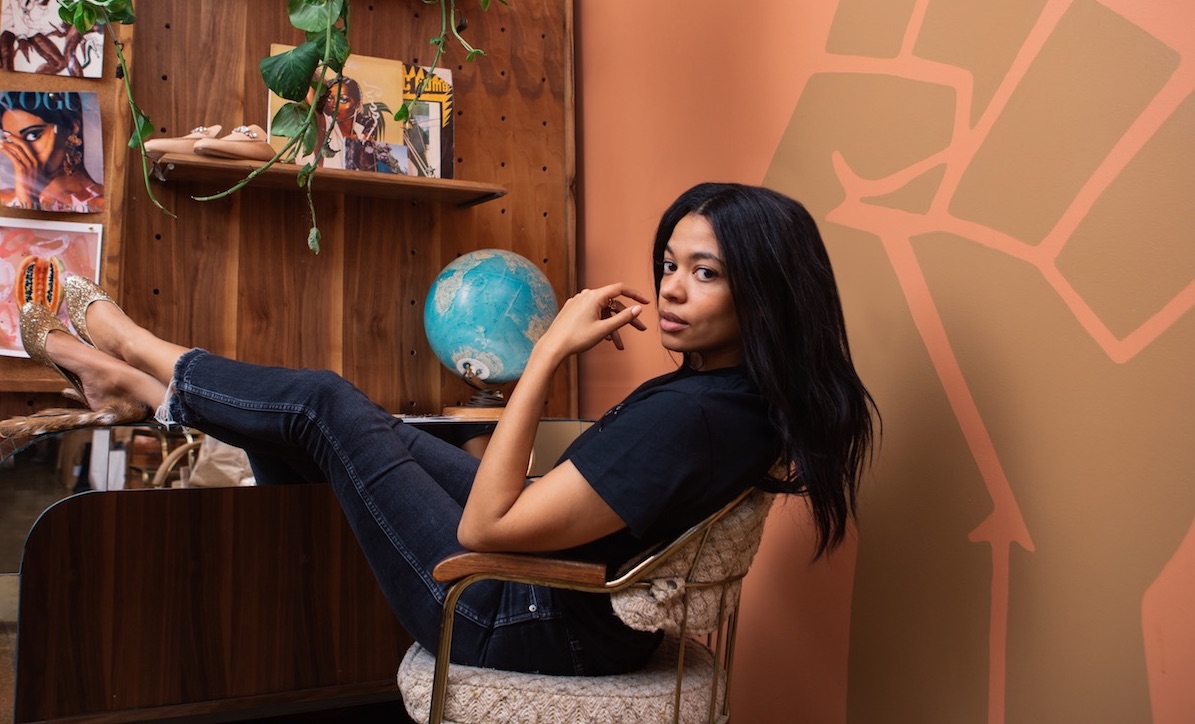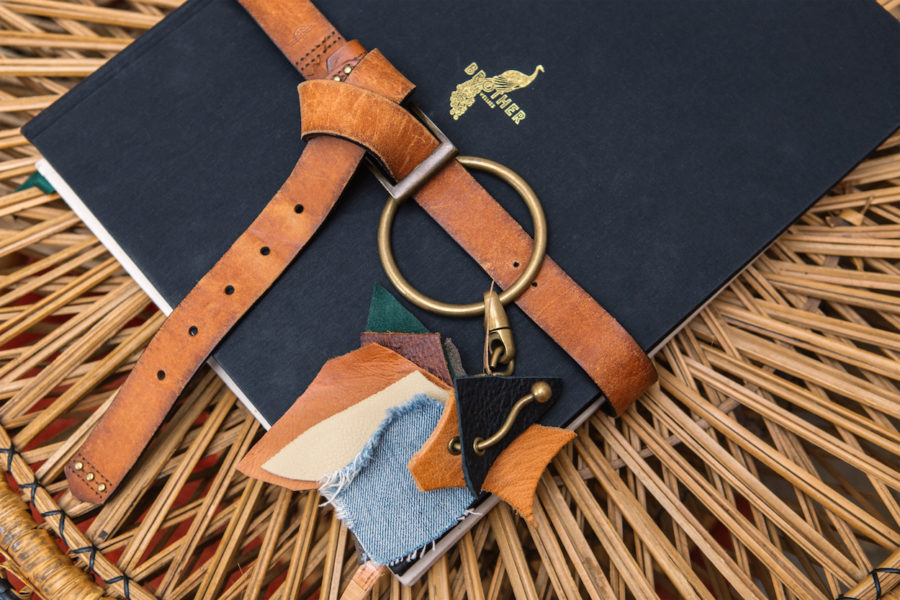For accessories designer Aurora James, her four-year-old brand, Brother Vellies, is a global effort. Traditional African craftsmanship and materials inform the texturally rich collection, in which shoes and handbags are produced according to James’s sustainability guidelines—which include vegetable-dying leather, using fur from government-mandated culling and local meat industries, and sourcing from regional farmers. By supporting local artisans from Morocco to South Africa, who hand make each Brother Vellies piece, James views the design process as an opportunity to imbue her products with more than just aesthetic value. From her office in New York City’s Garment District, the designer discusses the importance of travel, collaboration, and intuition.
What is your first step when designing?
I try to figure out what’s missing from my wardrobe. Then I think about different materials. Materials inform a lot of the design because of the specific way we source in Africa in relation to sustainability.
What does that look like?
In Marrakesh, we pulled vintage denim from piles of unwanted clothing to create our denim babouche slippers. It’s complicated, because the consistency isn’t always there. But that’s also what makes the products special. We also source hornback crocodile [skins] from a century-old, family owned and operated farm in South Africa, where they literally wait for crocs to die of old age. The wait time for our Crocodile Vellies is usually a year or more.
How do you work with artisans?
I like to bounce ideas off people in our workshops in Kenya, Nigeria, Morocco, and South Africa. They’re very specific about [preserving] techniques traditional to them. When possible, I try to bring their heritage into the collection so they can take pride in the work.
With our first pair of beaded knee-high sandals, I felt the women making the shoes, who own that cultural identity, should create the pattern for them. Often with traditional beading or embroidery, I give the artisans color and mood references; they create based on that inspiration. The embroidered birds on our moccasins and the Kenyan Maasai sandals are great examples of this.
Do you collaborate with anyone else?
Large companies pay consultants thousands of dollars to tell them they should use the color lavender. If I call on someone, it’s one of my designer friends. I surround myself with people I can have an honest dialogue with. For example, [the fashion designer] Ryan Roche and I did twenty different swatch dyes of this pink ribbon to get the right color. And that hat [points to a circular display stand] was a collaboration with [the milliner] Gigi Burris.
When do you know a collection is ready for production?
A collection is a pause on a specific day. I always keep designing in my mind, but I have to eventually stop. It’s like Wheel of Fortune, when the wheel is spinning. Sometimes it stops and you get a car. Sometimes it stops and you get nothing.
You spend a lot of time visiting the artisans you work with. Do you design while in transit?
Yes. Traveling and designing helps me get out of my own head. As a young designer you’re not just a creative director—you have to wear multiple hats. If I’m on a design trip, I’m able to focus on the product, which is really helpful.
Your office seems to reflect all the places you’ve been.
I have a deep love for vintage objects. That thing on wheels over there is an old rice steamer. I used to carry my whole collection around in it: women’s in the top compartment, men’s in the middle, and kids’ at the bottom.
I like having objects with history in this space. It makes you think about longevity and whether product you’re creating is going to exist beyond your ownership of it. If it won’t, then you shouldn’t make it.
Do you have any weird rituals or superstitions?
I don’t tell anyone what I’m working on. Once you tell someone, you have to listen to feedback. I don’t like feedback when I’m designing because then it’s just a wishy-washy thing. That’s why I don’t have a stylist. I follow my gut instincts, because ultimately, I’m responsible for the decisions I make.





